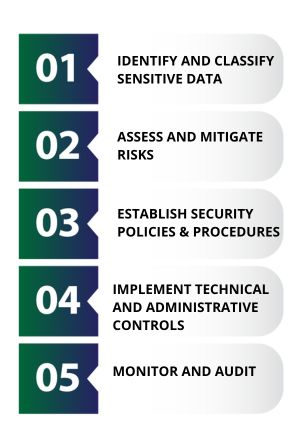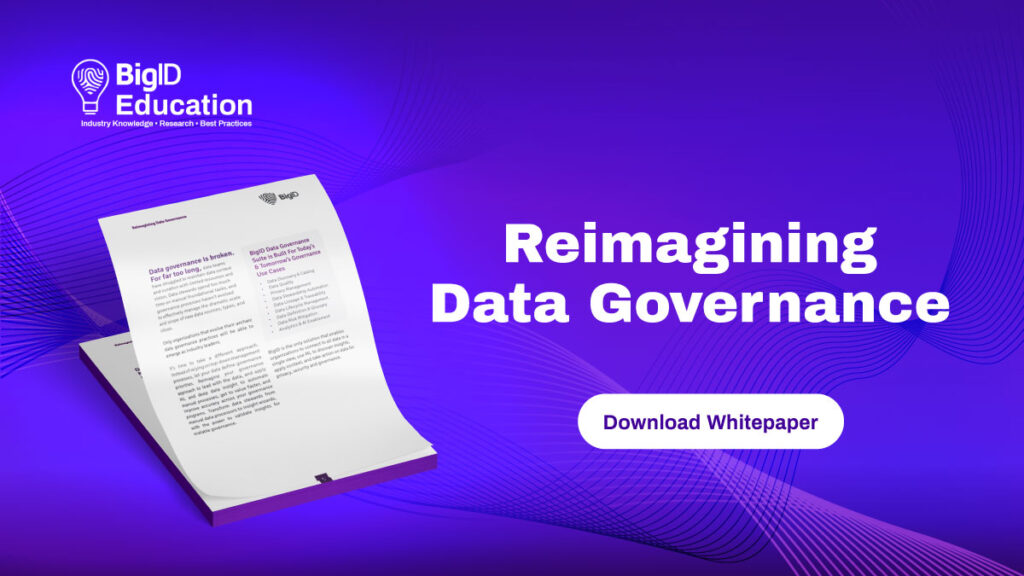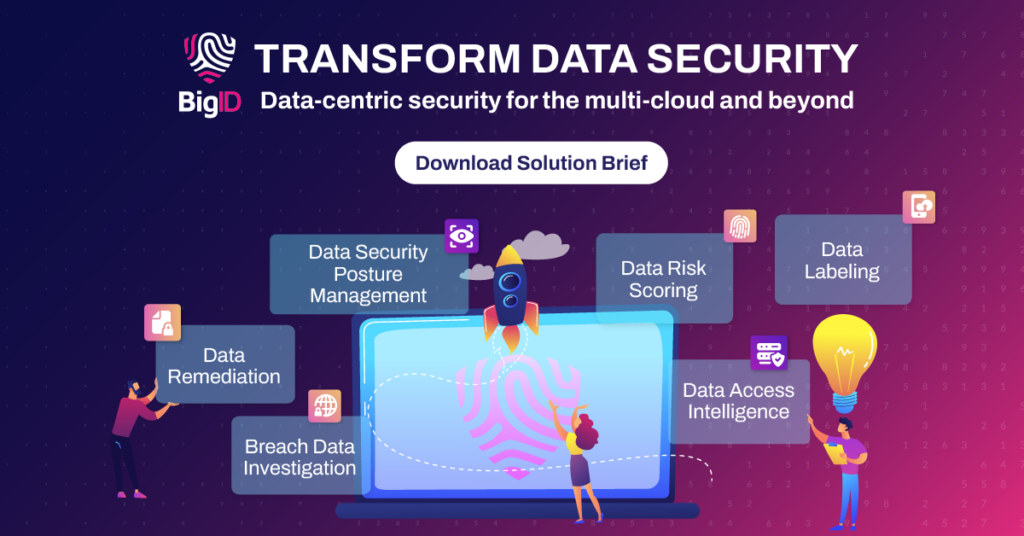What is data security governance?
Data security governance refers to the process of managing and protecting sensitive information in an organization. It involves the establishment of policies, procedures, and standards that ensure the confidentiality, integrity, and availability of data.
The goal of data security governance is to prevent unauthorized access, use, disclosure, modification, or destruction of sensitive data, whether intentional or accidental. It involves identifying and classifying data, defining roles and responsibilities, implementing security controls, and monitoring and reporting on compliance.
Effective data security governance requires collaboration between various stakeholders, including executives, IT professionals, legal and regulatory experts, and business users. By establishing a strong data security governance framework, organizations can reduce the risk of data breaches, protect their reputation and assets, and comply with legal and regulatory requirements.
Examples of data security governance
Here are some relevant examples of data security governance:
- Multi-factor authentication (MFA): MFA is a security control that requires users to provide multiple forms of authentication to access a system or application. For example, a user might be required to enter a password and provide a fingerprint or a one-time code generated by a mobile app. MFA is an example of data security governance in action because it helps protect sensitive data by ensuring that only authorized users can access it.
- Data encryption: Encryption is the process of encoding data so that it can only be accessed by authorized users with a decryption key. Many organizations use encryption to protect sensitive data both in transit and at rest. For example, data may be encrypted when it is transmitted over a network, or it may be encrypted when it is stored on a hard drive or in the cloud. Encryption is an example of data security governance because it is a control that helps protect data from unauthorized access.
- Data classification: Data classification is the process of categorizing data based on its sensitivity and criticality. For example, some data may be classified as public, while other data may be classified as confidential or highly sensitive. Data classification is an example of data security governance because it helps organizations understand which data is most valuable and needs the strongest protection.
- Access controls: Access controls are security measures that limit who can access certain systems, applications, or data. For example, an organization may use role-based access controls to ensure that only employees with a specific job function can access certain data or systems. Access controls are an example of data security governance because they help ensure that only authorized users can access sensitive data.
These are just a few examples of data security governance in action. Organizations must implement a range of controls and procedures to protect sensitive data, and data security governance is an essential part of this process.
Data governance vs data security governance
Data governance and data security governance are related concepts, but they focus on different aspects of managing data.
Data governance refers to the overall management of data within an organization. It involves establishing policies, processes, and standards for how data is collected, stored, analyzed, and shared. The goal of data governance is to ensure that data is accurate, reliable, and used effectively to support business objectives.
Data security governance, on the other hand, is focused specifically on protecting data from unauthorized access, use, disclosure, modification, or destruction. It involves establishing controls and procedures to ensure that sensitive data is secure, including encryption, access controls, monitoring, and incident response.
While data governance is concerned with the overall management of data, data security governance is a subset of data governance that is focused on protecting sensitive data from security threats.
5 steps to achieving data security governance
 Data security governance helps organizations manage and reduce risk in several ways:
Data security governance helps organizations manage and reduce risk in several ways:
- Identifying and classifying sensitive data: Data security governance requires organizations to identify and classify their sensitive data based on its sensitivity and criticality. This helps organizations understand which data needs the strongest protection, so they can focus their security efforts on the most critical areas.
- Assessing and mitigating risks: Data security governance requires organizations to conduct risk assessments to identify potential threats and vulnerabilities to their data. By understanding the risks they face, organizations can implement controls and procedures to mitigate these risks and reduce the likelihood and impact of security incidents.
- Establishing security policies and procedures: Data security governance requires organizations to establish policies and procedures to govern how data is handled and protected. These policies should cover data access, use, storage, and disposal, and should align with industry standards and regulatory requirements. By establishing clear policies and procedures, organizations can reduce the likelihood of human error or intentional misuse of data.
- Implementing technical and administrative controls: Data security governance requires organizations to implement technical and administrative controls to protect their data from unauthorized access, use, disclosure, modification, or destruction. Technical controls may include firewalls, encryption, intrusion detection and prevention systems, and data loss prevention tools, while administrative controls may include access controls, security training, and incident response planning. By implementing these controls effectively, organizations can reduce the likelihood and impact of security incidents.
- Monitoring and auditing: Data security governance requires organizations to continuously monitor their data and systems to detect and respond to security incidents. This includes conducting regular security assessments and audits, as well as implementing tools to monitor network traffic, system logs, and user activity. By monitoring their systems and data effectively, organizations can detect and respond to security incidents quickly, reducing the impact of these incidents on their operations and reputation.
Prioritizing data security governance helps organizations manage and reduce risk by identifying and classifying sensitive data, assessing and mitigating risks, establishing security policies and procedures, implementing technical and administrative controls, and monitoring and auditing their systems and data. Implementing these measures effectively, organizations can protect their sensitive data from security threats and comply with legal and regulatory requirements.

How will data security governance evolve?
Data security governance is a constantly evolving field, and there are several trends that are shaping its future in the wake of the latest technology, threats, and regulations:
- Increased focus on data privacy: With the introduction of new data privacy regulations such as GDPR and CCPA, there is a growing emphasis on protecting personal data. Data security governance will need to adapt to these regulations and ensure that organizations are compliant with the latest privacy requirements.
- Emergence of AI and machine learning: As AI and machine learning become more prevalent in business operations, data security governance will need to incorporate these technologies to detect and respond to security threats in real-time.
- Growing importance of cloud security: As more organizations move their data and applications to the cloud, data security governance will need to focus on cloud security measures such as data encryption, identity and access management, and monitoring.
- Focus on supply chain security: The increasing complexity of supply chains and the reliance on third-party vendors means that data security governance will need to address supply chain security risks and ensure that all parties in the supply chain are implementing adequate security measures.
- Adoption of zero trust security: Zero trust security is a security model that assumes all users and devices are potentially compromised and requires continuous verification of identity and access. Data security governance will need to adopt this model to ensure that only authorized users have access to sensitive data.
The future of data security governance will require adaptation to new technology, threats, and regulations. By staying current with these trends, organizations can ensure that their data security governance practices remain effective and compliant, reducing the risk of security incidents and protecting their reputation and operations.
BigID’s Approach to Data Security Governance
BigID is a data intelligence platform for privacy, security, and governance that empowers organizations to achieve data security governance, reduce risk and stay competitive. The platform uses machine learning algorithms and automation to help organizations identify and classify their sensitive data, conduct risk assessments, and implement security policies and controls.
- Data discovery and inventory: BigID scans and indexes data across all sources and repositories, both on-premises and in the cloud. Organizations can identify and classify sensitive data based on its content, context, and metadata.
- Risk analysis and remediation: BigID’s Data Risk Scoring uses machine learning to analyze and score data risks based on factors such as data sensitivity, regulatory compliance, and security controls— giving you the power to prioritize security efforts and implement remediation measures to proactively reduce risk.
- Policy management: BigID helps organizations create and manage security policies and controls to protect their data. This includes automated data retention policies, data access controls, and data encryption policies.
- Data subject access rights management: BigID’s Access Intelligence App enables zero trust so organizations can easily automate data subject access requests, manage data consent and comply with data privacy regulations.
- Incident response: BigID provides real-time alerts and notifications of potential security incidents, allowing organizations to respond quickly and effectively to mitigate the impact of a security breach.
To get a jumpstart on your data security governance initiatives and safeguard your enterprise data — schedule a free 1:1 demo with BigID today.


